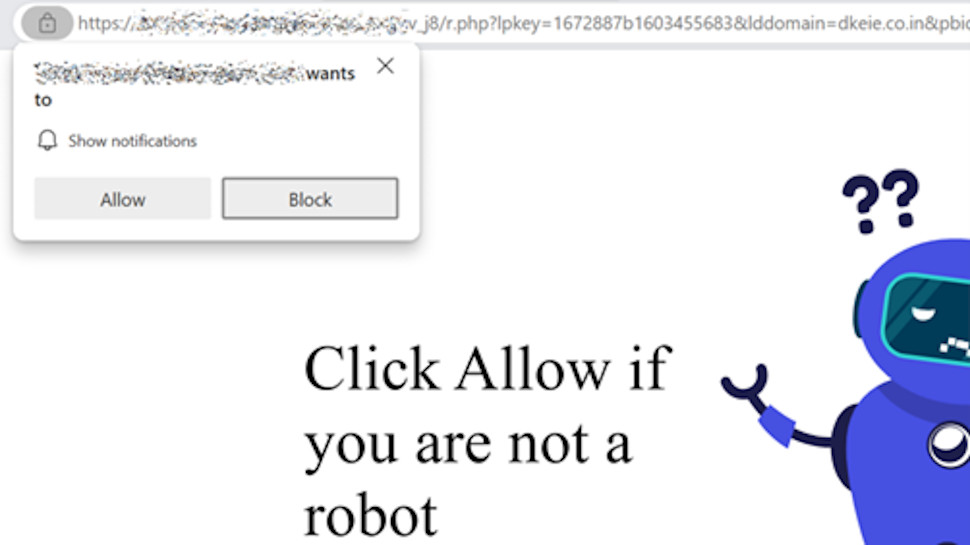Microsoft’s Edge browser has a new tool in the battle against spam, in the form of defenses against spammy notifications from websites.
Microsoft explains: “Website notifications are great for staying up to date on your favorite web apps, but they can also be used to spam you with messages that can be unwanted or even misleading. We’ve made changes to help customers avoid these spammy messages and increase their peace of mind.”
Edge will eliminate pop-ups that are trying to trick users into clicking to allow the website to send notifications.
In the example given in Microsoft’s blog post (spotted by Thurrott.com), the rogue site presents a message in the background urging the user to ‘click allow if you are not a robot’ when the notification panel is being displayed, hoping to confuse the user into clicking ‘Allow’ (see the pic below).

If the user falls for this kind of scam, odds are that they’ll then be spammed with a bunch of ‘notifications’ telling them, for example, that they have a virus (when they don’t), and trying to sell ‘antivirus’ to clear the (non-existent) infection. Edge’s new spam-blocking skills also extend to defeating these follow-up pop-ups, too, in a just-in-case style.
Microsoft tells us that it has identified dozens of types of notifications of a spammy nature along these lines, and that: “In this process we’ve also removed notification privileges from websites that send spammy notifications – in effect blocking billions of misleading notifications.”
Analysis: A two-pronged attack on misleading notifications
This is good work from Microsoft, as these kinds of notifications may be obvious to spot and ignore for tech-savvy users, but those newer to the computing world may find them rather intimidating and scary. And let’s be honest, they’re pretty annoying for everyone, so it’s clearly happy news to see the back of them.
Or at least, most of them, assuming Microsoft has pinned down as many of these problematic pop-ups as it claims.
It’s also worth noting that this fresh initiative has been combined with another plan to combat misleading notifications enacted back in May. Microsoft explains that it found most of these spammy notifications came from unfamiliar websites (those with lesser amounts of traffic), and so with those sites, the first notification they deliver is shown in a ‘quiet’ fashion.
That means it’s a subtle message tucked away in the address bar, rather than a full-on pop-up, and Microsoft observes that with this approach, it has witnessed a “significant decrease in customers reporting issues with notifications”, which again sounds like a laudable step forward.
Ironically, though, speaking of Edge and spam, Microsoft itself is spamming users – in a way – with a stealthy installation of an extension in recent versions of its browser (read up more on this rather bizarre episode here).
July 07, 2023 at 01:58PM from TechRadar - All the latest technology news https://ift.tt/djK9Vbi
via IFTTT

No comments:
Post a Comment